The human brain is incredibly complex. It has 86 billion neurons and 100 trillion connections. Even with centuries of study, the brain’s workings still puzzle us. Scientists work hard to understand its cell types and how it processes information.
Christof Koch, a leading neuroscientist, says we don’t grasp a worm’s brain. This highlights our limited knowledge of the human brain. Many experts in neuroscience strive to unveil the brain and its functions.
Exploring consciousness mysteries and brain diseases remains a top scientific goal. Our journey to reveal the human brain‘s secrets is challenging and exciting. Let’s uncover the brain’s mysteries together in this exploration.
Introduction to the Enigmatic Human Brain
The human brain is super complex, with about 86 billion neurons and 100 trillion connections. That’s as many stars as in our Milky Way galaxy. Neuroscientist Stephen Smith says it’s “complicated enough to somehow explain all the richness of the human experience.” Even after centuries of study, the brain is still a big puzzle. Researchers don’t fully get how all its parts come together for thinking, feeling, and acting.
The Complexity of the Human Brain
Our brains weigh only about 1.4 kilograms but have roughly 100 billion nerve cells. These cells can connect with thousands of others through synapses to create millions of new links each second. Glial cells, ten times more than neurons, help boost brain signals and cognitive processes. Chemical messengers called neurotransmitters, like dopamine and serotonin, are key for brain signals.
The Importance of Understanding the Brain
Understanding the brain is key to tackling neurological issues and mental health challenges. It also sheds light on human consciousness. Issues with neurotransmitters can lead to diseases like Parkinson’s and mood disorders. Techniques such as EEGs and MRIs help us peek into the brain’s activities.
Even with its great complexity, brain research is moving forward fast. Thanks to advanced technology, like the work of the ENIGMA Consortium with over 1,400 scientists, we’re uncovering more about the brain. This global team is deeply investigating the brain’s many mysteries.
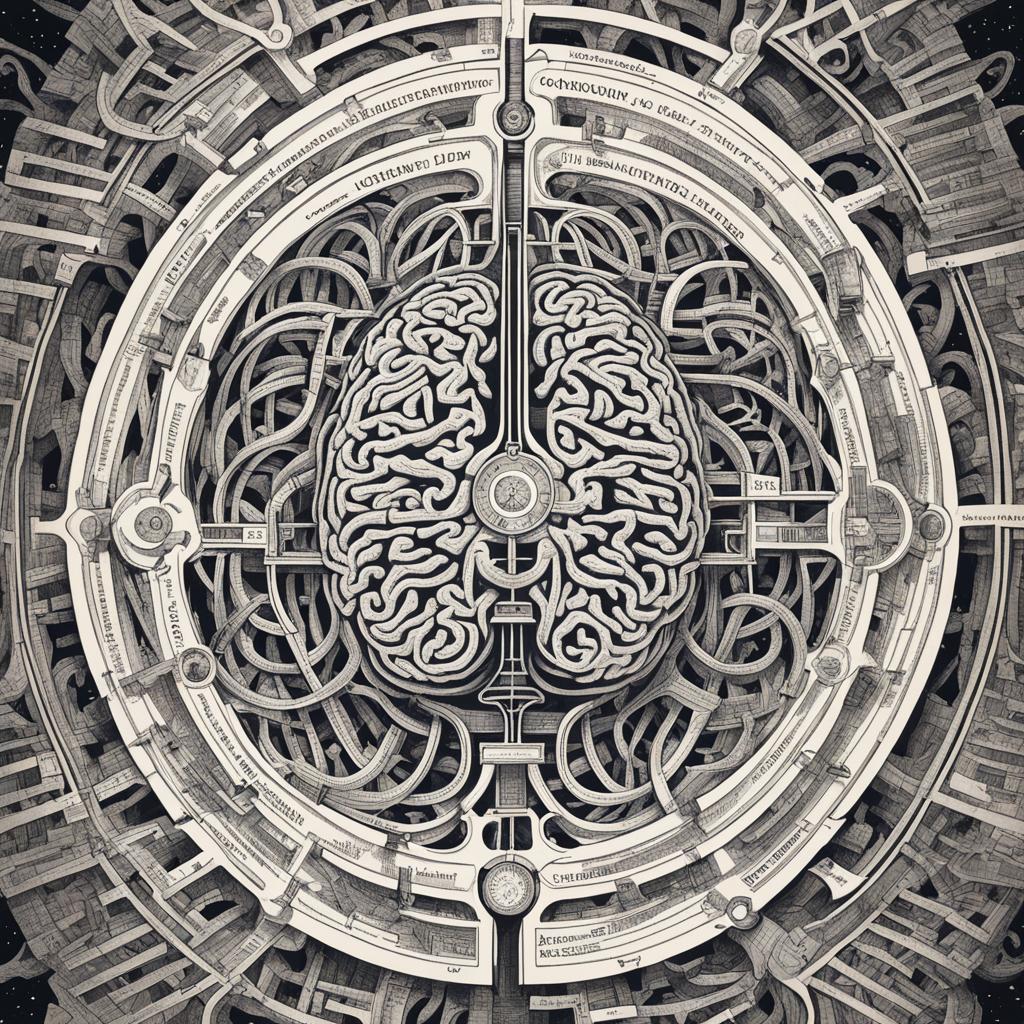

What is the Brain Made Of?
The human brain is a nature’s marvel. It’s made of a complex network of cells working together. They process information, control our bodies, and shape our thoughts. These cells are neurons and glial cells.
Neurons are key in the brain, sending electrical signals around our body. They come in many shapes and sizes. Glial cells, outnumbering neurons by 50 to 1, don’t send signals. Yet, they’re vital. They insulate, bring nutrients, and help defend against disease.
Mapping the Brain’s Cell Types
At the Allen Institute for Brain Science, researchers map brain cells. They look at gene expression, cell shape, connection, and how they act electrically. This work aims to understand all brain cell types. Knowing this could help treat brain and mental health issues.
The Periodic Table of Brain Cell Types
The brain’s structure is a key focus, with researchers always learning new things. We know the adult brain is about 3 pounds. It has around 86 billion neurons and 86 billion glial cells. But, we’re still learning about each cell’s specific role.
| Cell Type | Estimated Percentage | Key Function |
|---|---|---|
| Neurons | ~50% | Signal transmission and information processing |
| Astrocytes | ~20-40% | Provide structural and metabolic support for neurons |
| Oligodendrocytes | ~5-10% | Produce myelin, which insulates neuronal axons |
| Microglia | ~10-15% | Act as the immune system’s first responders in the brain |
| Ependymal Cells | ~1-2% | Line the ventricles and produce cerebrospinal fluid |
Our understanding of the brain’s cells keeps growing. This knowledge brings hope for neuroscience and medicine advances.
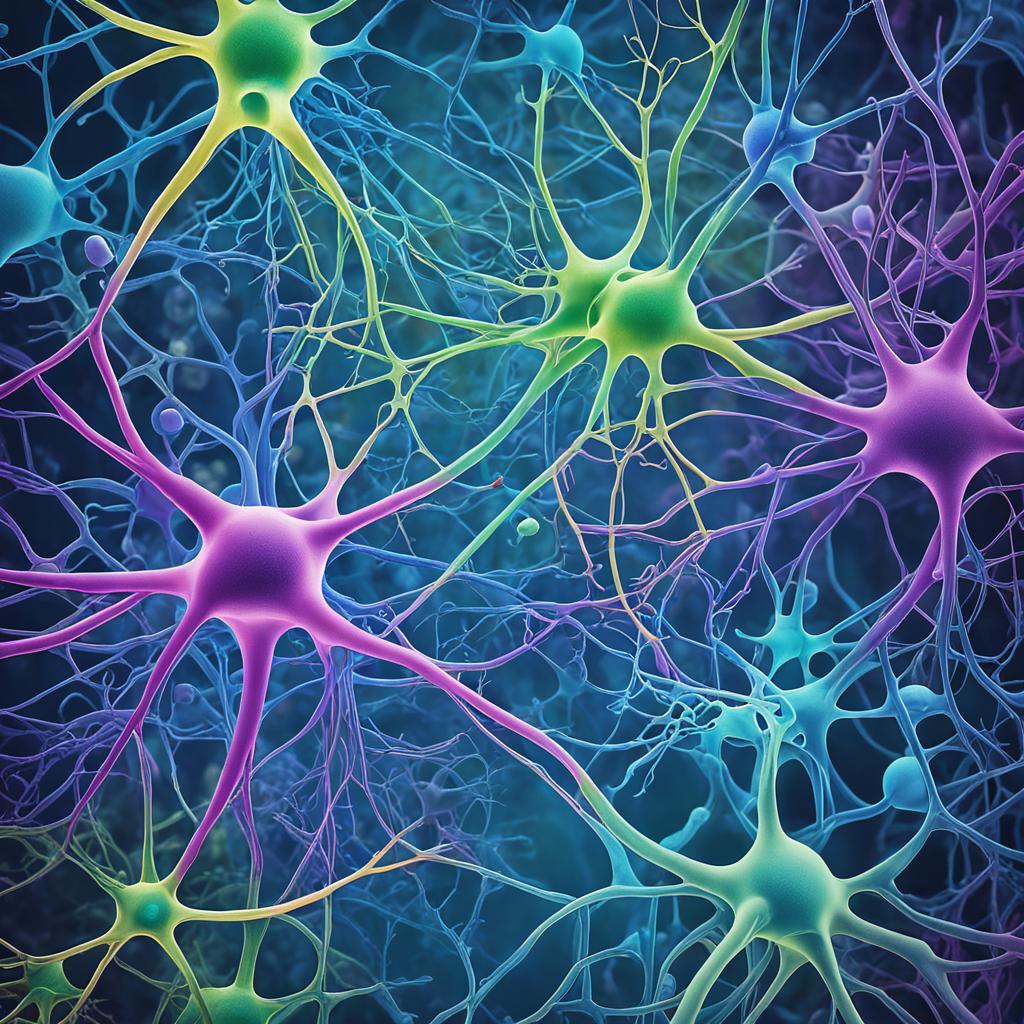

How Does the Brain Change in Disease?
Many neuropsychiatric brain diseases and neurological disorders target specific brain areas. They don’t affect the whole brain the same way. Neuroscientist Boaz Levi says, “We don’t know yet which brain cells are most at risk.”
Researchers are working to build a detailed list of brain cell types. This list could help identify the cells affected in different brain diseases and neurological disorders. Once we know which cells are hit, we could tailor treatments to their needs. The Allen Institute and other groups are teaming up to test this idea. They’re seeing if using special tools to focus on certain cells could help with Dravet syndrome. This syndrome is a rare, severe epilepsy type found in children.
| Condition | Prevalence in the U.S. |
|---|---|
| Alzheimer’s disease | Affects more than 6 million people |
| Autism spectrum disorder | Occurs in about 1 in 44 children |
| Brain tumors and other nervous system cancers | Represent 1.3% of all cancers |
| Epilepsy | Impacts 1.2% of the population, including 3 million adults and 470,000 children |
| Meningitis | Only 371 cases reported in 2019 |
| Mental illness | Affects 1 in 5 adults |
| Multiple sclerosis | Nearly 1 million people living with it |
| Strokes | Occur in nearly 800,000 people each year |
| Traumatic brain injuries | Led to over 220,000 hospitalizations in 2018 |
This table gives an overview of brain diseases and neurological disorders in the U.S. It shows their big impact on health. By digging deeper into how these conditions change the brain, scientists aim to find better ways to help.
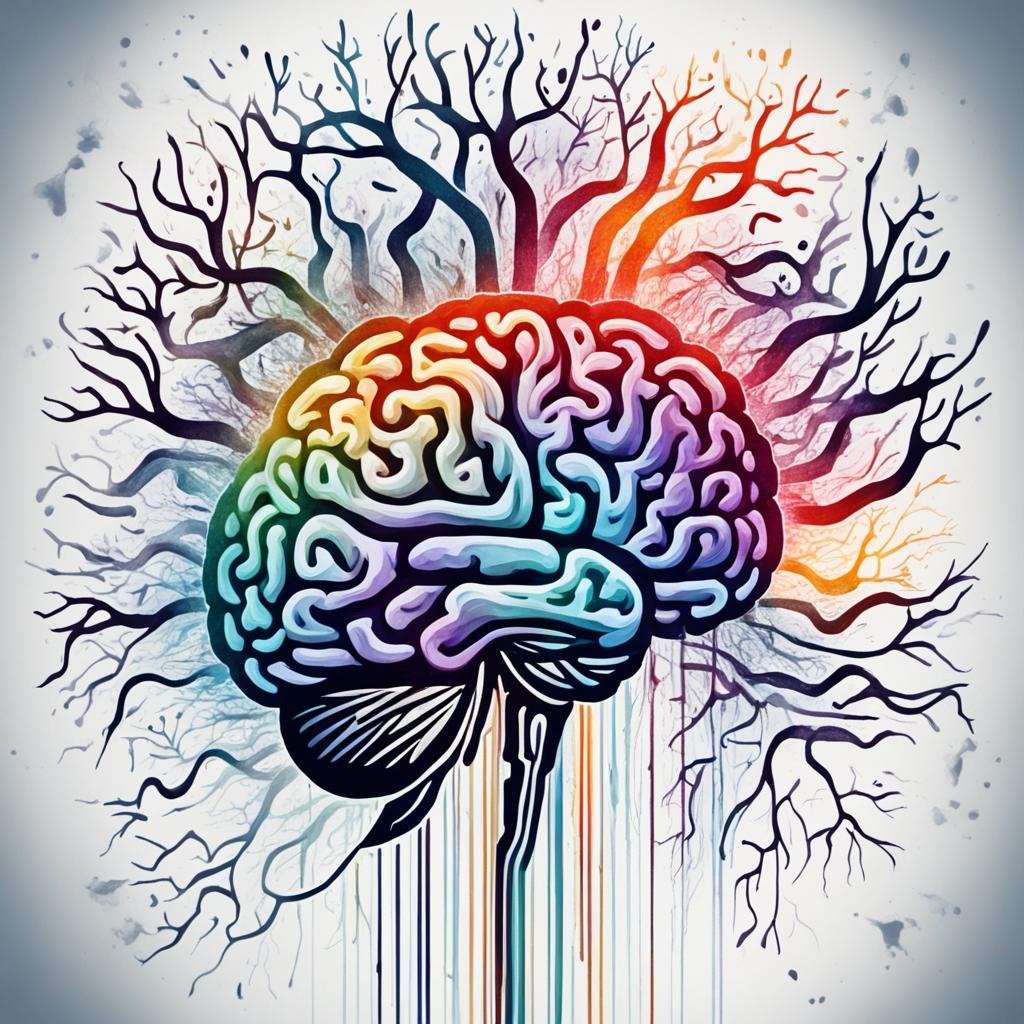

– Boaz Levi, Neuroscientist
How Do Neurons Communicate?
Neurons are brain cells that use both electricity and chemicals to talk. This talking is called neuron communication. It’s key to knowing how our brain works.
Understanding Synaptic Signaling
The main way neurons talk is through synaptic signaling. They send info across tiny gaps called synapses. Neurotransmitters, chemicals, go from one neuron to another. They can make the next neuron start or stop talking.
The Role of Neuromodulators
Besides the usual neurotransmitters, your brain has special signallers called neuromodulators. These include substances like dopamine and serotonin. They are super important in controlling how our brain works. They affect our emotions, thoughts, and even how we move and feel rewarded.
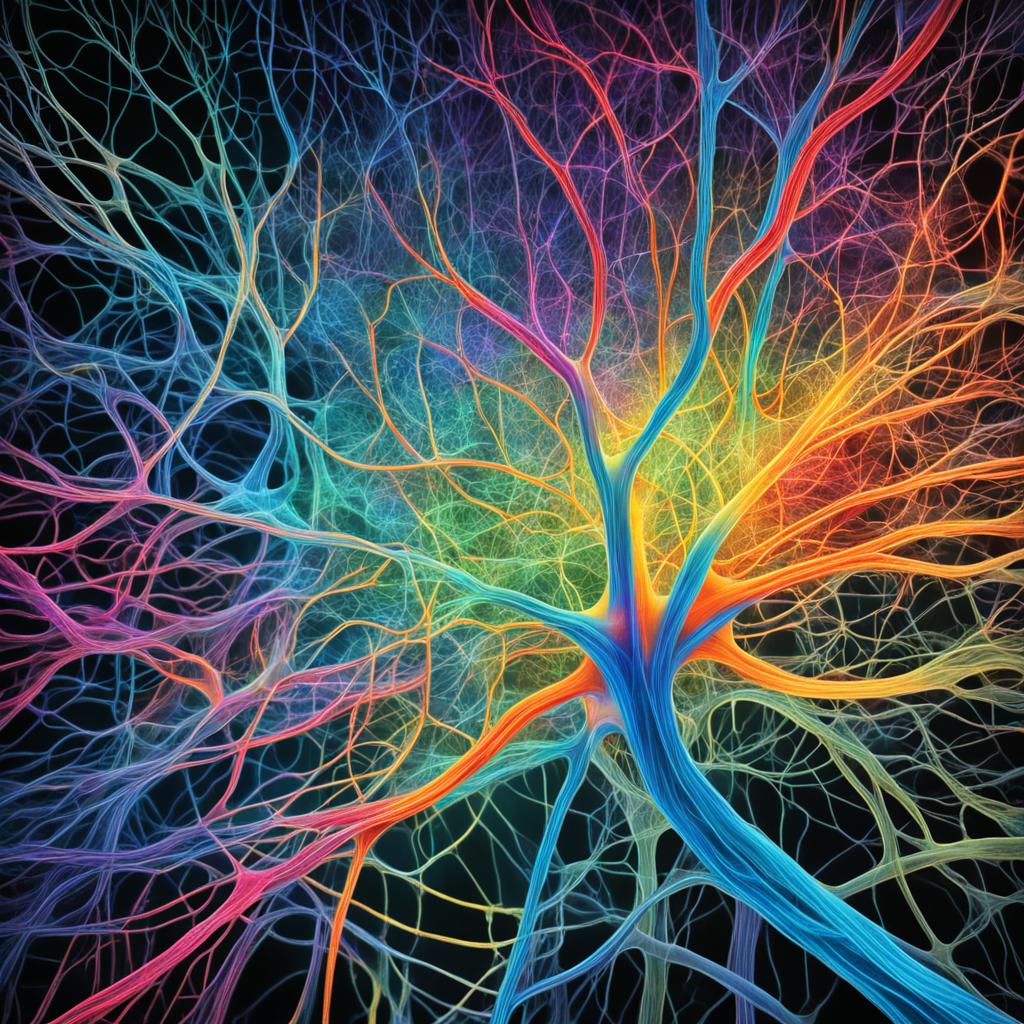

“Most neurons use glutamate or GABA to chat at their synapses. But there are many other chemicals, neuromodulators, at play. They’re not fully known, but very important. They help in how drugs for the brain work as well.”
Scientists are digging into how synaptic signaling and neuromodulators work. This helps us understand brain communication better. It shines a light on what might be going wrong in brain diseases. By learning more, we may find new ways to help with brain problems.
How Does the Brain Compute?
The brain’s ability to compute is still a big mystery. With billions of neurons and trillions of connections, it’s super complex. This allows us to think and learn in amazing ways. Scientists look closely at how the brain computes to uncover its secrets.
Studying the Visual Cortex
The visual cortex is critical for seeing and understanding what we see. Top scientists, like the Allen Brain Observatory group, study this part of the brain. They use new tech to watch how lots of neurons work together. They’ve found out that brain computing is more intricate than they first thought.
Christof Koch, a big name in neuroscience, says the brain isn’t easy to explain. We might have to use a lot of data and models to get it. This strategy could help us understand the brain’s complexity better.
“The brain is not a serial processing unit; it does not proceed through perception, decision, and action steps one by one. Its billions of neurons and trillions of connections work together in intricate and often unpredictable ways to enable our remarkable cognitive abilities.”
Even though we thought we understood the visual cortex, there’s still a lot we don’t know. Scientists aim to reveal the basic ways the brain computes. This knowledge can help with other brain areas too.
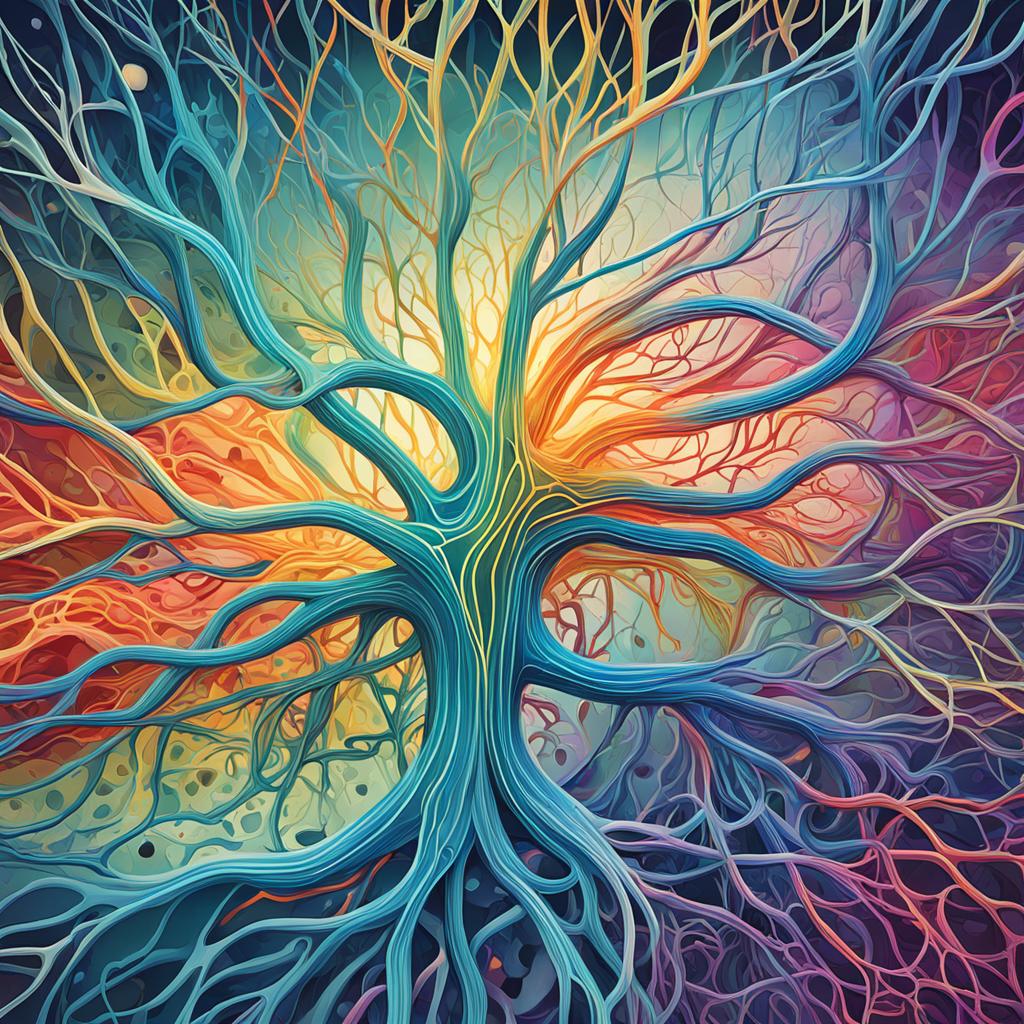

Discovering how the brain works is an ongoing adventure. As we get better tools, we are closer to solving its mysteries. This will help us grasp the neural information processing behind our thinking and actions.
Neuroscience: Unlocking the Brain’s Mysteries
The human brain is an amazing yet complex organ. It holds billions of neurons and trillions of connections. Neuroscientists are steadily unraveling its mysteries with the help of new technologies.
Interest and funding in neuroscience research are on the rise. Projects like the BRAIN Initiative support scientists in exploring new questions. As Christof Koch from the Allen Institute puts it, “This is a golden era of brain science.”
In the 19th century, pioneers like Santiago Ramón y Cajal made the first steps in neuroscience. Today, tools like fMRI and PET scans let us watch the brain work in real time. This gives us a peek into how the mind handles thoughts and actions.
Tools that track the brain’s electricity, like EEG, help too. They show us how the brain talks to itself, managing our feelings and behavior. Neuroscience has brought big breakthroughs in psychology, medicine, and education.
With every step forward in brain research, we grow closer to solving big challenges. We hope to treat diseases like Alzheimer’s and find out what makes us conscious. The future of neuroscience looks bright, promising new knowledge to help us all.
The Evolution of the Brain
Understanding the evolution of the human brain is key. Neuroscientist Stephen Smith suggests the synapse’s appearance was a key point. This was over 600 million years ago. Before neurons and synapses, about 600 million years ago, living things used different ways to signal.
By looking at the brain’s past, scientists can understand this vital organ better. They learn how the brain developed over millions of years. Studying earlier signaling types gives insights into how the brain has evolved.
The Origins of Synaptic Communication
600 million years ago, the neuron and synapse evolved. This was crucial for complex nervous systems. Before this, creatures used less direct ways to communicate.
Learning about earlier signaling helps brain experts. It teaches them about fundamental brain and neuroscience principles.
“The emergence of the synapse, the specialized connection between neurons, was a pivotal event in the evolution of complex nervous systems.”
Learning about brain evolution lets scientists understand this complex organ. They see what has led to the brain’s current state. They understand the ongoing changes that keep making it better.
The Importance of Studying Diverse Brains
Neuroscience usually studies mammalian brains, mainly those of rodents. However, there’s a new push to look at more species. Robyn Crook, a neuroscientist from San Francisco State University, thinks we should explore beyond just mammals. She believes we might find key lessons about how brains work by doing so.
Insights from the Octopus Brain
The octopus brain stands out from the human brain. It has over 500 million neurons spread throughout its body. This is different from humans, whose neurons are mostly in one place.
This unique setup lets octopuses think and act in complex ways. By studying brains like the octopus’s, we could learn how brain structure affects intelligence. This leads to understanding the vast variety of brain designs and functions in the natural world.
In the past, research often left out diverse groups in terms of race, and social status. This can skew the findings, missing crucial discoveries. Recent studies show that factors like race, social status, and sex shape the brain and how it works.
The world is getting more diverse, and science needs to reflect this. By studying a wider range of brains, from octopuses to people from different walks of life, we can learn a lot. This would help us grasp the full range of brain adaptations and functions.
“By limiting our focus to a small subset of the animal kingdom, we may be missing out on important insights about general principles of brain structure and function.”
– Robyn Crook, neuroscientist at San Francisco State University
The Challenges of Understanding the Brain
The human brain complexity is incredibly hard to fully grasp. It contains 86 billion neurons and 100 trillion connections. The complexity of its parts makes it a real challenge to understand completely. As neuroscientist Stephen Smith puts it, the brain’s complexity is tied to the depth of human experience.
Understanding the brain poses big neuroscience challenges. Studying it requires tools that can look at a lot of the brain at once. But, right now, we can only see a small part. Also, the brain’s activities are spread out, not simple and in one place. So, learning about its roles in consciousness and thought is difficult.
David Marr, a neuroscientist, offered a plan in the 1970s for understanding the brain. He suggested looking at functional characteristics, computing, and the role of neurons. Although this plan was a step forward, it didn’t solve all the puzzles.
“It’s complicated enough to somehow explain all the richness of the human experience.”
Dealing with the stress of brain complexity is important for neuroscience progress. A method called optogenetics is promising. It lets researchers control brain activities to test ideas. But, fully understanding the brain will take time and new approaches.
Conclusion
The human brain is still a great mystery that keeps scientists interested. Every day, they learn more about its countless cell types, how it calculates things, and much more. It’s amazing to think about what our small three-pound brain can do for us. And, our brains influence how we think, act, and even experience life.
Scientists are working hard to find new information that could change everything we know. They look at how brain cells are arranged and figure out how the brain works. Even with all the progress, our brain’s complexity seems endlessly fascinating. But, understanding it better is important, and new discoveries are right around the corner.
Neuroscience will keep moving forward, but it’s vital to think about the ethics. We need to be careful with new brain technologies. It’s up to everyone, not just scientists, to make sure the discoveries are used in the right ways. This means talking about the rules and ways to protect people’s interests.
Source Links
- https://alleninstitute.org/news/5-unsolved-mysteries-about-the-brain/
- https://alleninstitute.org/news/why-is-the-human-brain-so-difficult-to-understand-we-asked-4-neuroscientists/
- https://www.psychologytoday.com/us/blog/communications-that-matter/202307/new-studies-prove-the-brain-is-still-a-mystery
- https://www.newscientist.com/article/dn9969-introduction-the-human-brain/
- https://www.nature.com/articles/s41398-020-0705-1
- https://www.ted.com/read/ted-studies/neuroscience/introductory-essay
- https://www.aans.org/patients/conditions-treatments/anatomy-of-the-brain/
- https://www.ninds.nih.gov/health-information/public-education/brain-basics/brain-basics-know-your-brain
- https://www.hopkinsmedicine.org/health/conditions-and-diseases/anatomy-of-the-brain
- https://www.nia.nih.gov/health/brain-health/how-aging-brain-affects-thinking
- https://www.nia.nih.gov/health/alzheimers-causes-and-risk-factors/what-happens-brain-alzheimers-disease
- https://my.clevelandclinic.org/health/diseases/22934-brain-diseases
- https://mcgovern.mit.edu/2019/02/28/ask-the-brain-how-do-neurons-communicate/
- https://www.ncbi.nlm.nih.gov/pmc/articles/PMC3860493/
- https://qbi.uq.edu.au/brain-basics/brain/brain-physiology/action-potentials-and-synapses
- https://www.scientificamerican.com/article/how-the-brain-constructs-the-outside-world/
- https://www.theguardian.com/science/2020/feb/27/why-your-brain-is-not-a-computer-neuroscience-neural-networks-consciousness
- https://press.princeton.edu/ideas/is-the-human-brain-a-biological-computer
- https://www.iomcworld.com/open-access/neuroscience-unlocking-the-mysteries-of-the-brain.pdf
- https://bulkbookstore.com/neuroscience-9781398802353
- https://www.americanhhm.com/articles/unlocking-the-mysteries-exploring-neuroscience-and-brain-research
- https://www.kentscientific.com/blog/the-evolution-of-neuroscience/
- https://neuronup.us/neuroscience/neurosciences-and-how-they-have-evolved-over-time/
- https://en.wikipedia.org/wiki/Evolutionary_neuroscience
- https://duartelab.la.utexas.edu/user/images/documents/DotsonDuarte2020_importanceofdiversityincognitiveneuroscience.pdf
- https://www.nature.com/articles/s41592-023-01983-z
- https://culturalawareness.com/the-neuroscience-of-inclusion/
- https://www.ncbi.nlm.nih.gov/pmc/articles/PMC4441769/
- https://www.frontiersin.org/articles/10.3389/fnsys.2023.1147896
- https://www.pennmedicine.org/news/news-releases/2023/april/penn-medicine-study-reveals-new-insights-on-brain-development
- https://ccnmtl.columbia.edu/projects/neuroethics/conclusion.html
- https://www.ncbi.nlm.nih.gov/books/NBK207985/
- https://academic.oup.com/book/24820/chapter/188476972
